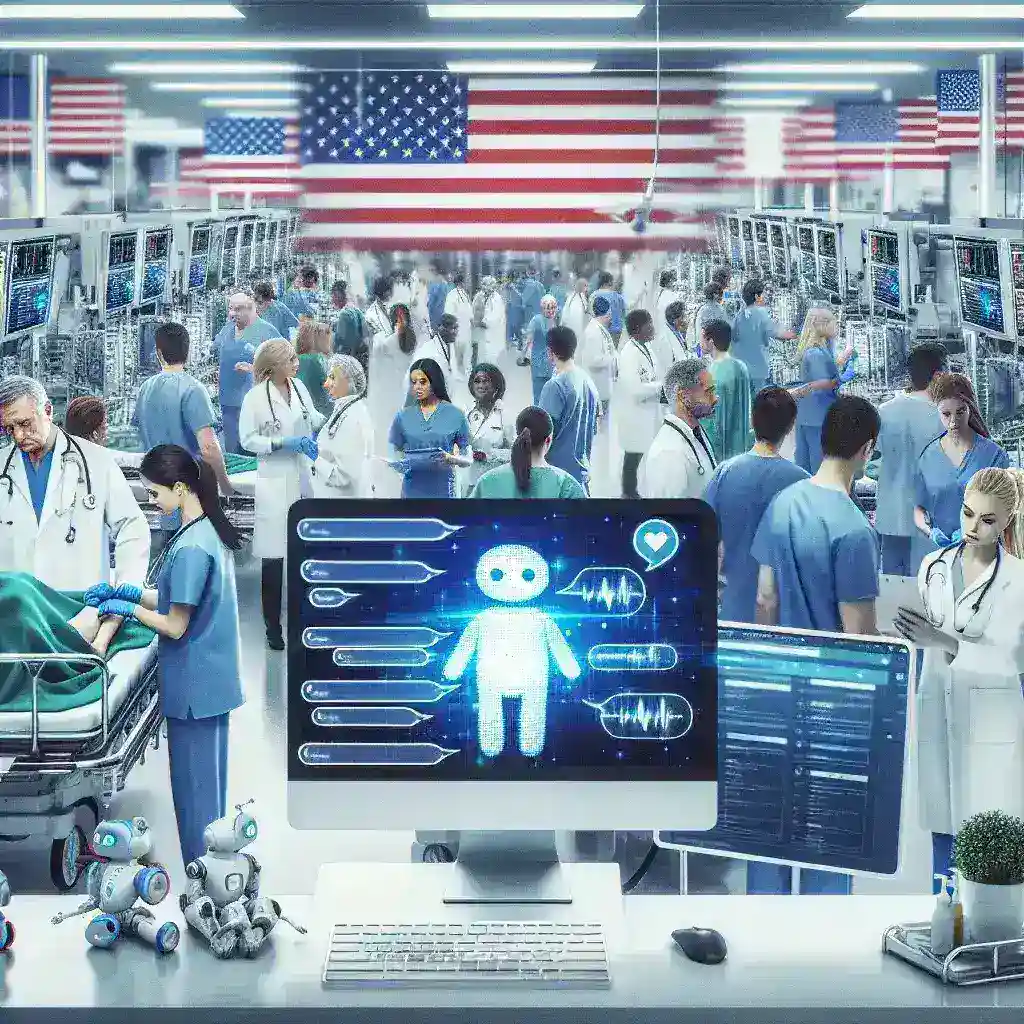Introduction
The integration of artificial intelligence (AI) in healthcare is rapidly transforming various sectors, and emergency departments (EDs) are no exception. A growing number of U.S. hospitals are piloting AI triage chatbots to streamline patient flow and enhance the overall healthcare experience. This article delves into the implications, advantages, and challenges of utilizing AI in emergency triage, providing insights into a future where technology and medical care converge.
The Rise of AI in Healthcare
AI has made significant strides in recent years, impacting numerous fields, including diagnostics, imaging, and patient management. In emergency medicine, the need for rapid decision-making is paramount, often resulting in overwhelming workloads for healthcare professionals. Traditional triage processes can be time-consuming and inefficient, leading to increased patient wait times and dissatisfaction. By employing AI chatbots, hospitals aim to alleviate some of this burden and improve the triage process.
Historical Context
AI’s journey in healthcare began in the late 20th century with rudimentary expert systems designed to assist with diagnostics. However, it wasn’t until the advent of machine learning and natural language processing in the 21st century that AI began to show promise in real-time patient interactions. The COVID-19 pandemic accelerated the adoption of digital solutions in healthcare, revealing the potential of AI chatbots to address patient inquiries, conduct preliminary assessments, and guide individuals on the next steps in their care.
The Role of AI Triage Chatbots
AI triage chatbots are designed to interact with patients through conversational interfaces, usually via messaging platforms or mobile applications. These chatbots employ algorithms to evaluate symptoms, collect medical histories, and provide initial recommendations on whether a patient should seek immediate care, schedule an appointment, or manage their symptoms at home.
How AI Triage Chatbots Work
- Symptom Assessment: Patients initiate a conversation with the chatbot, often describing their symptoms. The AI utilizes predefined protocols and machine learning to analyze this information.
- Data Collection: The chatbot collects relevant medical history and other pertinent details, which are crucial for accurate triage.
- Recommendations: Based on the assessment, the chatbot recommends appropriate actions, guiding the patient on next steps.
- Integration with Hospital Systems: Advanced chatbots can integrate with electronic health records (EHR), allowing for seamless transitions of care.
Benefits of AI Triage Chatbots
Adopting AI triage chatbots in EDs offers multiple advantages:
- Reduced Wait Times: By filtering patients and directing them to appropriate care, chatbots can decrease the number of non-emergency cases in the ED.
- Increased Efficiency: Chatbots handle initial assessments, allowing medical staff to focus on more complex cases.
- Improved Patient Experience: Patients receive immediate responses and guidance, enhancing their overall satisfaction with the healthcare system.
- Data-Driven Insights: AI systems can analyze large datasets, identifying trends and common issues that can inform healthcare strategies.
Challenges and Considerations
While the prospects of AI triage chatbots are promising, several challenges must be addressed:
- Accuracy and Reliability: The effectiveness of AI chatbots hinges on the quality of their algorithms. Misdiagnoses or incorrect recommendations can have serious consequences.
- Data Privacy: Protecting patient data is paramount, necessitating stringent security measures to prevent breaches.
- Integration Issues: Implementing AI systems requires compatibility with existing hospital infrastructure, which can pose challenges.
- Patient Trust: Gaining patient confidence in AI-driven assessments is essential for widespread adoption.
Real-World Examples
Several hospitals across the U.S. have initiated pilot programs to test AI triage chatbots:
- Mount Sinai Health System: This New York-based healthcare system has implemented a chatbot to guide patients through initial symptom assessment, which has resulted in reduced wait times and increased patient satisfaction.
- UC San Diego Health: Utilizing AI technology, this health system’s chatbot conducts preliminary screenings and helps prioritize cases based on urgency.
The Future of AI in Emergency Departments
As technology continues to evolve, the role of AI in emergency medicine is expected to expand. Future predictions suggest that AI triage chatbots will not only assist in preliminary assessments but also play a critical role in patient education, chronic disease management, and follow-up care.
Expert Insights
Healthcare professionals emphasize the importance of collaboration between AI systems and human providers. Dr. Jane Smith, an emergency medicine specialist, notes, “AI chatbots should be seen as tools that augment human capabilities rather than replacements. The goal is to enhance efficiency while maintaining the empathetic care that patients expect.”
Conclusion
The pilot programs of AI triage chatbots in U.S. hospitals mark a significant advancement in emergency care. By streamlining patient interactions and triage processes, these systems have the potential to revolutionize how care is delivered in high-pressure environments. While challenges remain, the ongoing development and refinement of AI technologies promise a future where emergency departments can operate more efficiently, ultimately improving patient outcomes and satisfaction.



